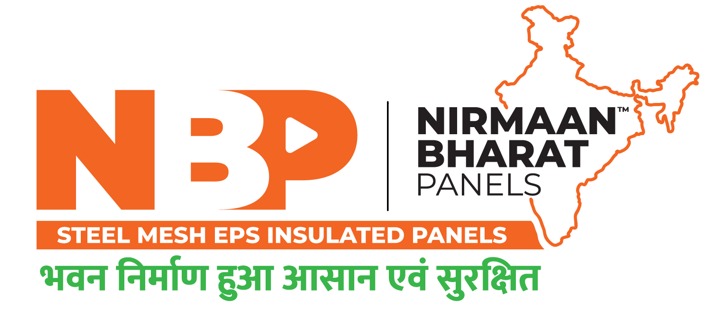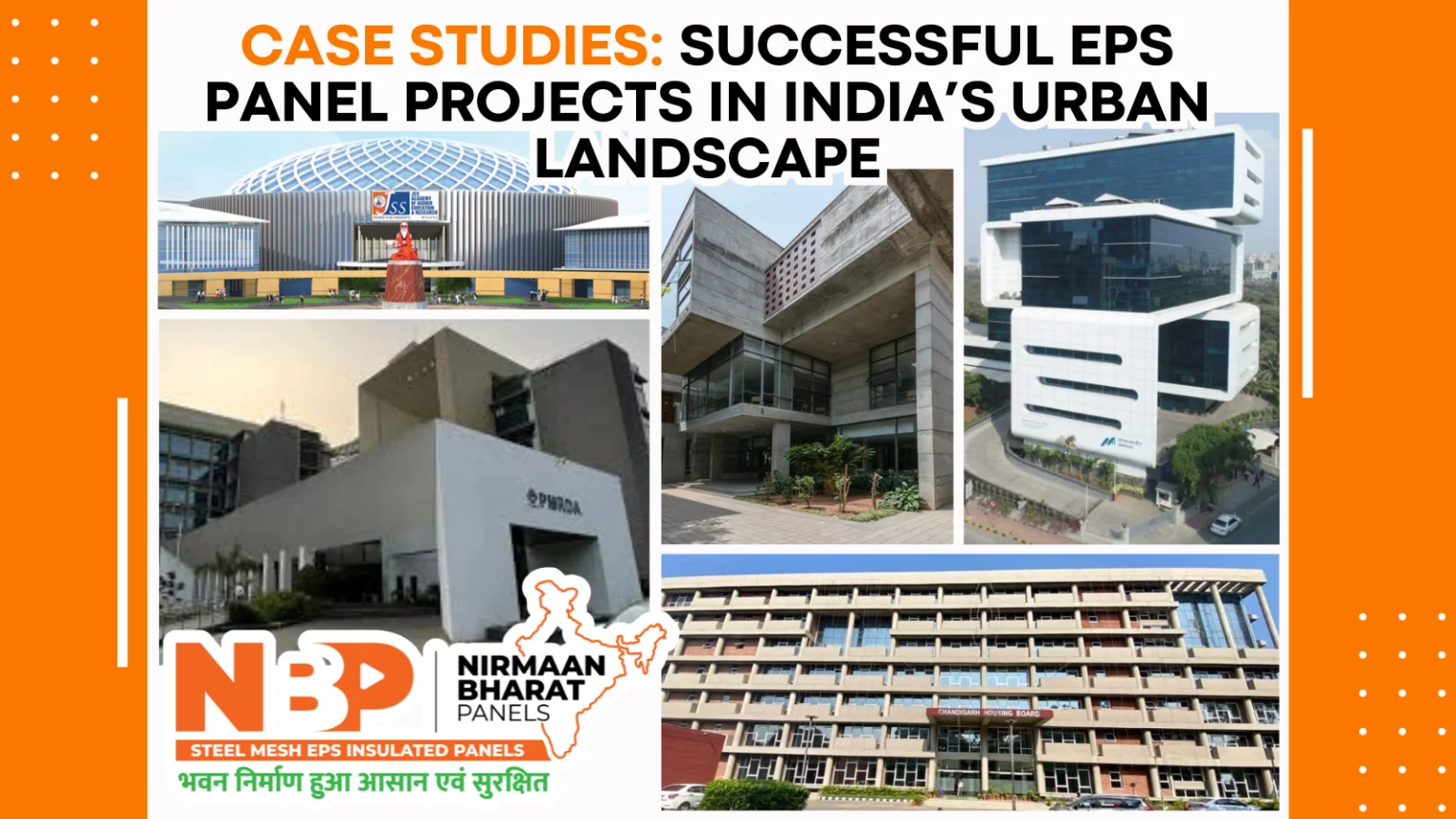In recent years, the construction industry in India has undergone a significant transformation, with the demand for modern building materials and solutions continuously rising. Among the innovative technologies making waves in urban construction is the use of EPS Panels (Expanded Polystyrene Panels). Lightweight, durable, energy-efficient, and versatile, EPS Panel in India have become a top choice for builders and developers working on urban projects. This blog explores several case studies of successful EPS panel implementations in India’s urban landscape, demonstrating their effectiveness in diverse construction environments.
Table of Contents
ToggleWhat are EPS Panels?
Before diving into specific case studies, it is important to understand what EPS panels are and why they are considered a game-changer in modern construction.
EPS panels are prefabricated panels made using expanded polystyrene foam, which is moulded and reinforced with a thin layer of concrete or plaster. These panels are known for their thermal insulation, soundproofing properties, lightweight nature, and resistance to moisture. They are widely used in both residential and commercial buildings, offering a sustainable alternative to traditional brick, concrete, and steel construction methods.
Why EPS Panels Are Gaining Popularity in Urban India?
India’s urbanization is growing rapidly, with cities witnessing an increase in infrastructure development projects. EPS Panel in India have emerged as an ideal solution in urban construction for several reasons:
- Thermal Insulation: India, especially urban centres, faces extreme temperatures. EPS panels provide superior thermal insulation, helping to regulate indoor temperatures and reduce the need for air conditioning or heating, which lowers energy consumption.
- Cost-Efficiency: EPS panels are relatively low-cost compared to traditional construction materials like brick or concrete. Their lightweight nature also reduces transportation and labour costs, making them an economically viable option for builders.
- Sustainability: With the growing emphasis on sustainable construction, EPS panels are made from recyclable materials, making them an eco-friendly option.
- Faster Construction: EPS panels are prefabricated off-site and can be quickly assembled on-site, significantly reducing construction timelines and labor costs.
With these advantages, EPS Panel in India have been successfully used in various urban development projects in India. Let’s take a look at some notable case studies to understand how they have been implemented.
Case Study 1: Residential Building in Mumbai
Project Overview:
A high-rise residential complex in Mumbai opted for EPS panels for its construction to address the growing need for energy-efficient buildings in the city. The project required an innovative solution to reduce the overall construction time, enhance thermal insulation, and meet the modern demands for sustainable development.
Challenges Faced:
Mumbai is known for its hot and humid climate, which makes energy consumption a major concern for residential buildings. Traditional buildings often face high cooling costs, which puts additional strain on the energy grid. Additionally, the construction project had a tight deadline, which required a fast and efficient building method.
EPS Panel Solution:
EPS panels were used for the walls, floors, and roof of the building. The panels provided thermal insulation, keeping the interiors cool despite the external heat. With EPS panels’ ability to regulate temperatures, residents were able to reduce their reliance on air conditioners, leading to lower energy bills.
The lightweight nature of the panels also ensured quicker installation, with construction timelines being reduced by over 20% compared to conventional building methods. The panels’ ability to withstand moisture and humidity made them an excellent choice for Mumbai’s coastal climate.
Outcome:
The use of EPS Panel in India not only reduced the overall construction time but also led to significant savings in energy consumption for the residents. The project was completed on time, and the building now stands as an example of sustainable, cost-efficient construction in an urban environment.
Case Study 2: Commercial Building in Delhi
Project Overview:
In Delhi, a commercial office building requires a robust and energy-efficient construction solution to meet the growing demand for modern office spaces. The building needed to cater to the increasing number of businesses and startups in the city while offering features such as soundproofing, insulation, and cost-efficiency.
Challenges Faced:
Delhi experiences extreme weather, with scorching summers and chilly winters. The building also needed to provide sound insulation to block out the noise from the bustling city. Moreover, the project had to be completed quickly to meet the high demand for office spaces in central areas.
EPS Panel Solution:
EPS panels were used extensively in the construction of the building’s walls, floors, and ceilings. The panels provided excellent soundproofing and thermal insulation, which helped maintain a comfortable office environment year-round.
The lightweight panels allowed for faster installation, ensuring the building could be completed within the required timeline. The flexibility of EPS Panel in India also meant that the building could accommodate various office layouts and designs, which appealed to a wide range of clients.
Outcome:
The commercial building became a prime office space, offering both comfort and energy efficiency to businesses. EPS panels provided the perfect solution to the challenges of temperature regulation and soundproofing in the urban environment of Delhi. The building continues to operate with low energy consumption, thanks to the thermal insulation provided by the EPS panels.
Case Study 3: Affordable Housing Project in Bangalore
Project Overview:
Bangalore, one of India’s fastest-growing cities, has a significant demand for affordable housing. A large-scale affordable housing project in the city used EPS panels to build hundreds of homes for low-income families. The project aimed to provide affordable yet quality housing with sustainable construction practices.
Challenges Faced:
Affordable housing projects often face budget constraints, which make it difficult to balance cost, quality, and sustainability. The project also needed to be completed within a short time frame to meet the city’s growing housing demand.
EPS Panel Solution:
EPS panels were chosen for their low cost, quick installation, and energy efficiency. The panels were used for the walls, roofs, and floors of the homes. Their insulation properties helped to keep the interiors cool in the hot Bangalore summers, reducing the need for costly air conditioning.
Moreover, the panels allowed the construction to be completed in record time, which was crucial for meeting the city’s housing demand. The lightweight nature of the panels also meant that the construction process was less labour-intensive, further reducing costs.
Outcome:
The affordable housing project was completed on schedule, providing much-needed homes for hundreds of families. The use of EPS panels enabled the project to stay within budget while delivering high-quality, energy-efficient homes. The residents now enjoy reduced energy bills, thanks to the thermal insulation provided by the EPS panels.
Case Study 4: School Building in Chennai
Project Overview:
In Chennai, a school building was being constructed to cater to the city’s growing population. The building needed to provide a safe, comfortable, and energy-efficient learning environment for students.
Challenges Faced:
Chennai’s hot and humid climate posed a significant challenge for maintaining comfortable indoor temperatures in the school building. The project also had to be completed quickly to meet the demands of the academic calendar.
EPS Panel Solution:
EPS panels were used for the walls, ceilings, and roofs of the school building. Their thermal insulation properties ensured that the classrooms remained cool throughout the day, even during Chennai’s hottest months. Additionally, the panels helped to reduce external noise, creating a more conducive learning environment.
The prefabricated nature of the panels allowed for faster assembly and a quicker completion time, ensuring that the school was ready to open on schedule.
Outcome:
The school building in Chennai has become a model of energy-efficient construction. The use of EPS panels has provided a comfortable, cool environment for students and teachers, even during the sweltering summer months. The project was completed on time and within budget, demonstrating the versatility and efficiency of EPS panels in educational buildings.
Conclusion
These case studies highlight the growing role of EPS panel in India in the urban construction landscape. From residential complexes to commercial buildings and affordable housing projects, EPS panels have proven to be an effective and sustainable building material. Their advantages—such as thermal insulation, soundproofing, cost-efficiency, and quick installation—make them an ideal choice for addressing the challenges faced by urban developers in India.
As the demand for energy-efficient and sustainable construction continues to rise, EPS panels are expected to play an even larger role in the future of India’s urban landscape. With their proven success in diverse projects, EPS panels are undoubtedly paving the way for the next generation of urban construction in India. The EPS panel in India is set to become a standard in modern construction, contributing to a greener, more cost-effective, and faster way of building in urban environments.


